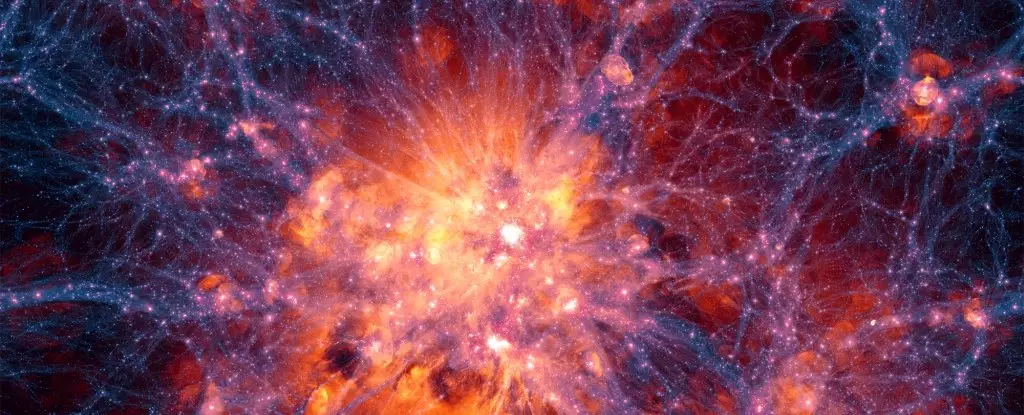The enigma of dark matter has perplexed scientists for decades. It is a significant component of the universe, constituting roughly 27% of its total mass-energy content, yet remains largely invisible and ungraspable. Our comprehension of the cosmos hinges on understanding dark matter’s role, as it influences the motion of galaxies and the overall structure of the Universe. Tim Fuchs, a physicist at the University of Southampton, articulately illustrates this quandary: “Dark matter remains one of the fundamental questions scientists are still trying to answer—it dictates the structure of our Universe but is still undetectable.” At present, no terrestrial experiment has managed to identify dark matter despite the multitude of theories proposed regarding its nature.
The presence of dark matter is inferred instead of directly observed. Observations of celestial phenomena reveal a concerning disparity between the mass we can observe—composed predominantly of baryonic matter, which includes stars, planets, and cosmic dust—and the gravitational forces that these structures exert. Particularly telling are the rotational speeds observed in the outer regions of galaxies, which exceed expectations based solely on visible matter. The gravitational lensing of light around massive objects, a phenomenon predicted by Einstein’s general relativity, further supports the dark matter hypothesis. These observations suggest that dark matter exists in a ratio of about six parts to every one part of regular matter.
Yet, the essence of dark matter eludes detection; it does not reflect, emit, or absorb light, leading scientists to explore alternative methods to identify its characteristics.
The University of Southampton is spearheading a groundbreaking initiative to detect dark matter and confront the challenge head-on. The proposed experiment, set to launch aboard the Jovian-1 satellite in 2026, embodies an innovative fusion of theoretical exploration and technological ingenuity. The underlying concept involves levitating sheets of graphite in a microgravity environment. This technique is pivotal as it allows for ultra-sensitive detection of minuscule forces that could indicate the presence of dark matter.
According to Fuchs, “Our experiment is unlike anything attempted before: we’ll be levitating graphite between magnets which, in zero gravity, are incredibly sensitive to small forces.” The hypothesis posits that if dark matter exists in sufficient density, it could create a detectable ‘wind’—a subtle push on the levitating sheets of graphite that can be measured. This method capitalizes on the unique, frictionless conditions of microgravity, which could enable scientists to achieve sensitivity previously unattainable on Earth.
This ambitious project is not merely a solo endeavor. It showcases a remarkable collaboration involving students and experts from multiple institutions, including the University of Portsmouth and Surrey University. This collective effort amplifies the potential for diverse insights and innovative solutions in the pursuit of understanding dark matter. The Jovian-1 satellite, compact in size yet brimming with various experimental setups, embodies the ingenuity of young scientists charting new territories in astrophysics.
Even though the wait for results may extend over two years following the launch, the implications of these experiments, regardless of finding definitive evidence, promise to enhance our understanding of dark matter. Fuchs mentions, “There are theories that say the dark matter interaction rate may actually be so high that it cannot penetrate our atmosphere.” Such insights could illuminate why numerous ground-based detectors have yet to yield concrete signals.
While the quest to decipher the complexities of dark matter remains fraught with challenges, the ongoing efforts spearheaded by the University of Southampton reflect humanity’s relentless pursuit of knowledge. The forthcoming experiment aboard Jovian-1 is not simply a scientific inquiry but a testament to innovation and collaboration in the face of unresolved cosmic mysteries. Achieving a breakthrough could ultimately reshape our understanding of the universe and the unseen entities that govern its behavior. Until then, the quest continues, buoyed by hope and scientific determination.


Leave a Reply